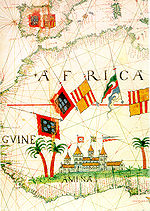Question: remembering that in Saudi Arabia women are not
allowed to drive, where in the world are only women, but not men, allowed to
ride motorbikes?
Answer: Bawku Municipal District, Upper East Region, Ghana. Since
2010, in response to the latest outbreaks of violent disruption, attributed to
historical conflicts between two tribal groups and also criminal individuals, a
complete ban on all males riding or travelling as passengers on motorbikes was
decreed, and is enforced by Ghana’s National Security Council.
 |
| Map of Ghana- Zebilla is mid-way between Bolga(tanga) and Bawku. Photo BBC |
 |
Photo-internet
|
I travelled to the town of Bawku, some 40 kilometres east
of Zebilla, along the main tarmac road leading to Burkina Faso, with my work
colleague Haruna, and his family. I was to be a guest at a Baby Naming ceremony
of his great niece.
Many streets of Bawku are lined with trees, giving welcome
stripes of shade. The town bustles with trading, as a destination, a passing
through place and home for three to four thousand students of the High School,
the Technical School and the Vocational College. With men cycling in twos and
threes, women scarved and brightly
clothed from head to foot sedately cruising on their motorbikes, there is a
quietness, a slower pace than Zebilla, with an echo of Amsterdam, but in
brilliant sunshine and heat.
 |
| Photo-internet |
The Baby Naming- for the child Naida-required my greeting
the beautifully dressed infant, housed in her mother’s room with her mother and
giving my best wishes and a small token gift. I was then seated, on a chair,
rather than the mats on the floor, within the extended family’s square,
enclosed courtyard, to listen to the chatter of the women and young children as
they took their share of the prepared food and admire the brilliant colours of
the clothes worn. The men and older boys talked under the hired gazebos,
sitting on the hired chairs, outside the compound. It was a pleasant social
gathering. I was introduced to Haruna’s mother-in-law, who sat on a small low
wooden stool in one corner, quietly watching the proceedings, receiving her
sons and daughters, her grandchildren and other visitors.
 |
| Proud mother and beautiful baby. |
 |
The family's courtyard, hosting the baby naming. Guests enjoy food cooked by the sisters. Time:- around 9 am.
The men are outside, under the hired gazebos. The cooking began at 4am.
|
 |
The great grandmother (second right) with three of her eight children, and one great- grandchild peeping over the heads.
Haruna's wife, Haleema, is second left. |
During our journey we learned of the death, the previous
evening, of Haruna’s elderly Auntie, who had been ill for the last two years.
And so, collecting our portions of the food, in typical “take out” small
plastic bags, we set off again, calling first to see Haruna’s invalid mother, offering
condolences for the loss of her sister, and then on to the funeral, at Auntie’s
home. (As a Muslim, Auntie would be
buried within 24 hours of death.)
With no time to arrange for catering, hospitality being so
important and prided in African culture, only well water from
the family’s own courtyard, was available. Food for guests would feature at
subsequent memorial events for Auntie, the first being the following weekend.
Again, the women, never less than fifty at any time, were seated about the
inner square courtyard of Auntie’s family’s courtyard, mostly on unrolled
prayer mats, while the males congregated outside sitting in reserved,
allocated` areas among the parked bicycles, motorbikes and occasional car. The
women wore long scarves to cover their heads, the men caps, but otherwise all
were in everyday clothes.
Auntie’s corpse, shrouded and in her room, laid on
the floor, was to be seen, prayed for, by each adult, and so I was ushered in
to take my turn. The room was small, and with a dozen mourners present, was
crowded, dark but not gloomy, or over laden with grief. Following the lead of
Haruna, I knelt, composed my thoughts and paid my respects for a precious life
now finished.
The family was controlling arrangements. Everyone else
filled their time patiently, talking quietly but cheerfully enough. Some hours
later, when an absent son, trying to reach Bawku from Accra within the 24
hours, gave his consent to go ahead without him, the final rituals began.
While Auntie’s body was washed and prepared for her coffin
by immediate relatives, her eldest son led the women in chanting song and
prayer. After moving outside to the men, the women gathered themselves, the
prayer mats were rolled and all flowed through the connecting passage to the
sun-baked outside. Here, men and women segregated, praying took place. At least one hundred and fifty mourners had
gathered now, in row after row, kneeling. Then silently, fluidly, all stood,
moved back calmly to line the entrance of the family home. Auntie’s body, now
in its green steel box coffin, was carried out and the men left to take her to
her final resting place in the cemetery, the women waiting back in the
compound.
The event to my eyes was respectful, accepting of death,
with visible signs of grief from some.
 |
| Image- internet |


































.jpg)









